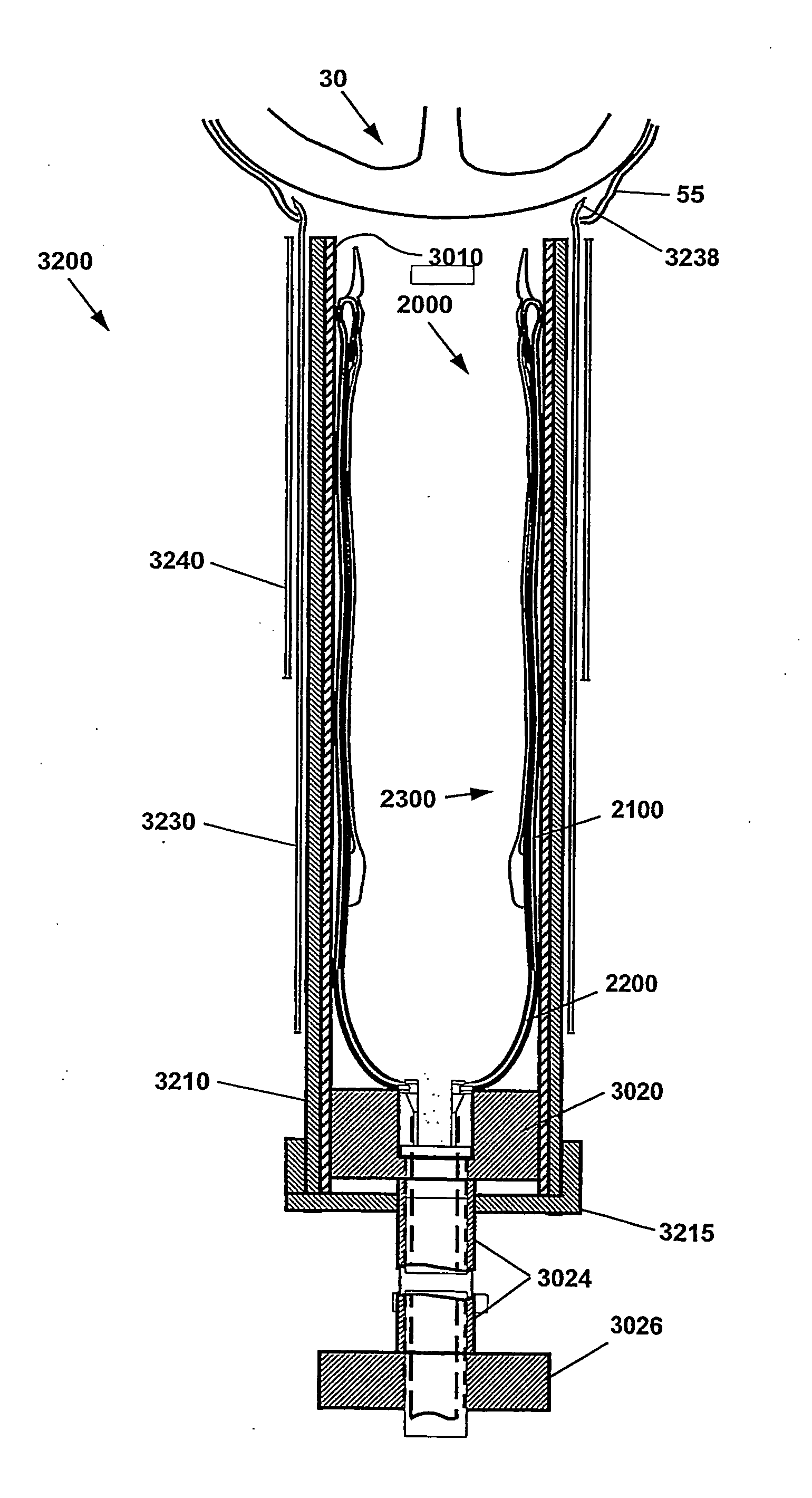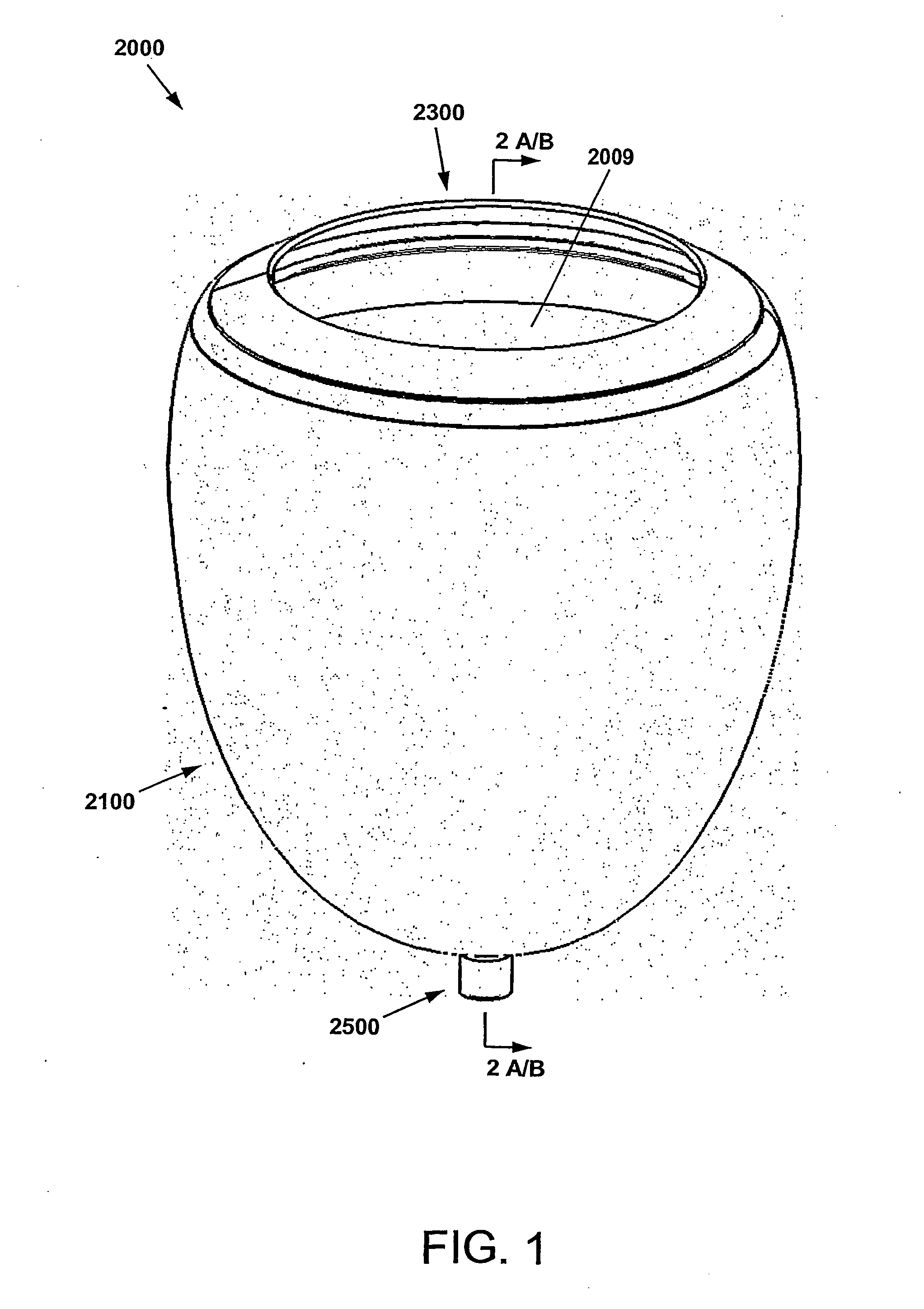Method and Apparatus for Minimally Invasive Direct Mechanical Ventricular Actuation
a mechanical ventricular and actuation technology, applied in the direction of heart stimulators, prostheses, therapy, etc., can solve the problems of insufficient cardiac output, loss of life before adequate circulatory support, and dcc devices that only benefit hearts with substantial degrees of lv failure, etc., to achieve convenient insertion of the deployment tool, simple minimally invasive procedure, and quick
- Summary
- Abstract
- Description
- Claims
- Application Information
AI Technical Summary
Benefits of technology
Problems solved by technology
Method used
Image
Examples
Embodiment Construction
[0069]For a general understanding of certain embodiments of the DMVA, reference is made to the drawings, wherein like reference numerals have been used throughout to designate identical elements.
[0070]As used herein, the term Cup is meant to indicate the Direct Mechanical Ventricular Assist device as described herein, such device comprising a cup-shaped outer shell. The terms Cup, DMVA Cup, DMVA device, and DMVA apparatus may be used interchangeably in this specification and are intended to denote the overall Direct Mechanical Ventricular Assist device described herein in various embodiments, unless specifically noted otherwise. The cup-shaped outer shell comprises a container forming a curved conical void, or a substantially parabolic or hyperbolic void. In one embodiment, the void of the cup-shaped shell is complementary to the exterior ventricular portion of a human heart. The cup-shaped shell provides a support enclosure within which the ventricular region of the heart is constr...
PUM
 Login to View More
Login to View More Abstract
Description
Claims
Application Information
 Login to View More
Login to View More - R&D
- Intellectual Property
- Life Sciences
- Materials
- Tech Scout
- Unparalleled Data Quality
- Higher Quality Content
- 60% Fewer Hallucinations
Browse by: Latest US Patents, China's latest patents, Technical Efficacy Thesaurus, Application Domain, Technology Topic, Popular Technical Reports.
© 2025 PatSnap. All rights reserved.Legal|Privacy policy|Modern Slavery Act Transparency Statement|Sitemap|About US| Contact US: help@patsnap.com



